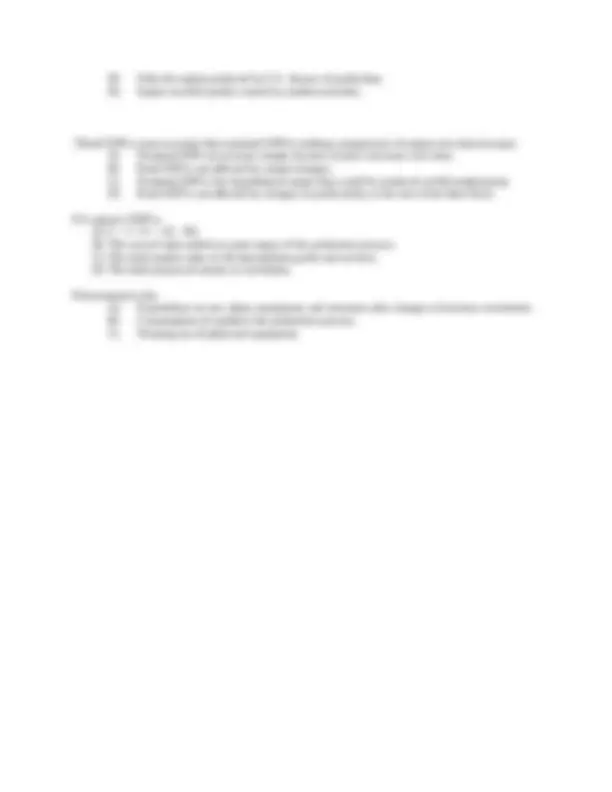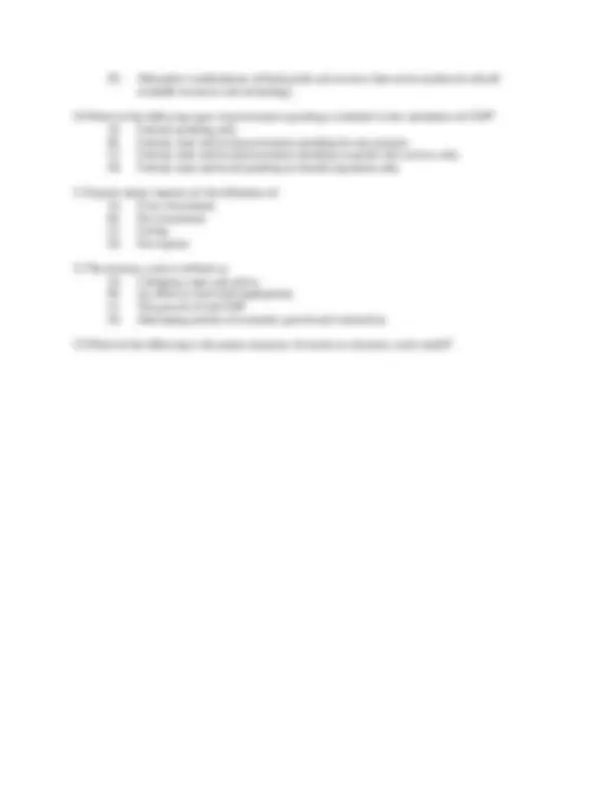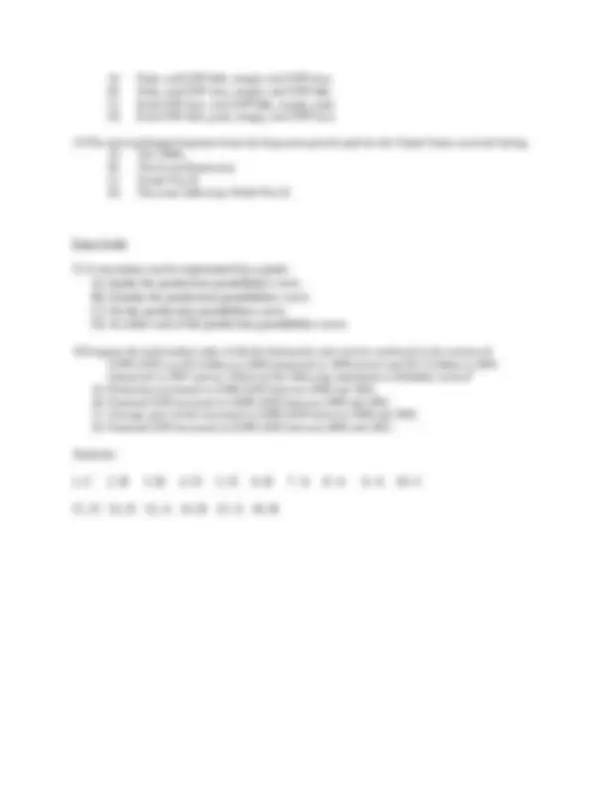





Study with the several resources on Docsity

Earn points by helping other students or get them with a premium plan


Prepare for your exams
Study with the several resources on Docsity

Earn points to download
Earn points by helping other students or get them with a premium plan
Community
Ask the community for help and clear up your study doubts
Discover the best universities in your country according to Docsity users
Free resources
Download our free guides on studying techniques, anxiety management strategies, and thesis advice from Docsity tutors
QUIZ 3 Material Type: Quiz; Professor: Toh; Class: Honors: Principles of Macroeconomics; Subject: Economics; University: Radford University; Term: Fall 2008;
Typology: Quizzes
1 / 5

This page cannot be seen from the preview
Don't miss anything!




ECON 105: Principles of Macroeconomics Quiz 3 October 13, 2008 Multiple Choice Questions 1.The total market value of all final goods and services produced within a nation's borders in a given time period is: A) Intermediate goods. B) GNP. C) GDP. D) Price Index. 2.If a nation has GDP of $12,500 billion and a population of 200 million, what is the nation's GDP per capita? A) $52,500. B) $62,500. C) $12,500. D) $42,500.
A) Wrong. GDP will not be affected because nothing new is being produced. B) Right. GDP will increase, ceteris paribus. C) Wrong. GDP will not be affected because this is not a socially desirable use of resources and will therefore not be included in GDP. D) Wrong. GDP will decline because cleaning the streets will take resources away from more productive work. 4.Which of the following would not be included in the calculation of GDP? A) Income earned by an attorney. B) Income earned by a CPA. C) Contract work performed by an electrician. D) Tips earned by a bartender who does not report it to the IRS. 5.The underground economy exists for all of the following reasons except : A) People wish to avoid taxes. B) Illegal activities are often highly profitable. C) It is difficult to trace such transactions. D) Most jobs pay employees under the table. 6.To avoid counting the same output more than once the calculation of GDP includes: A) Intermediate goods plus final goods. B) Only the value of final goods. C) The value added at each stage of production plus intermediate goods.
D) Alternative combinations of final goods and services that can be produced with all available resources and technology. 10.Which of the following types of government spending is included in the calculation of GDP? A) Federal spending only. B) Federal, state and local government spending for any purpose. C) Federal, state and local government spending on goods and services only. D) Federal, state and local spending on transfer payments only. 11.Exports minus imports are the definition of: A) Gross investment. B) Net investment. C) Saving. D) Net exports. 12.The business cycle is defined as: A) Changing wages and prices. B) An effort to reach full employment. C) The growth of real GDP. D) Alternating periods of economic growth and contraction. 13.Which of the following is the proper sequence of events in a business cycle model?
A) Peak, real GDP falls, trough, real GDP rises. B) Peak, real GDP rises, trough, real GDP falls. C) Real GDP rises, real GDP falls, trough, peak. D) Real GDP falls, peak, trough, real GDP rises. 14.The most prolonged departure from the long-term growth path for the United States occurred during: A) The 1980s. B) The Great Depression. C) World War II. D) The years following World War II. Extra Credit
16.Suppose the total market value of all the final goods and services produced in the country of GDPLAND was $12 billion in 2000 (measured in 2000 prices) and $12.5 billion in 2001 (measured in 2001 prices). Which of the following statements is definitely correct? A) Production increased in GDPLAND between 2000 and 2001. B) Nominal GDP increased in GDPLAND between 2000 and 2001. C) Average price levels increased in GDPLAND between 2000 and 2001. D) Nominal GDP decreased in GDPLAND between 2000 and 2001.